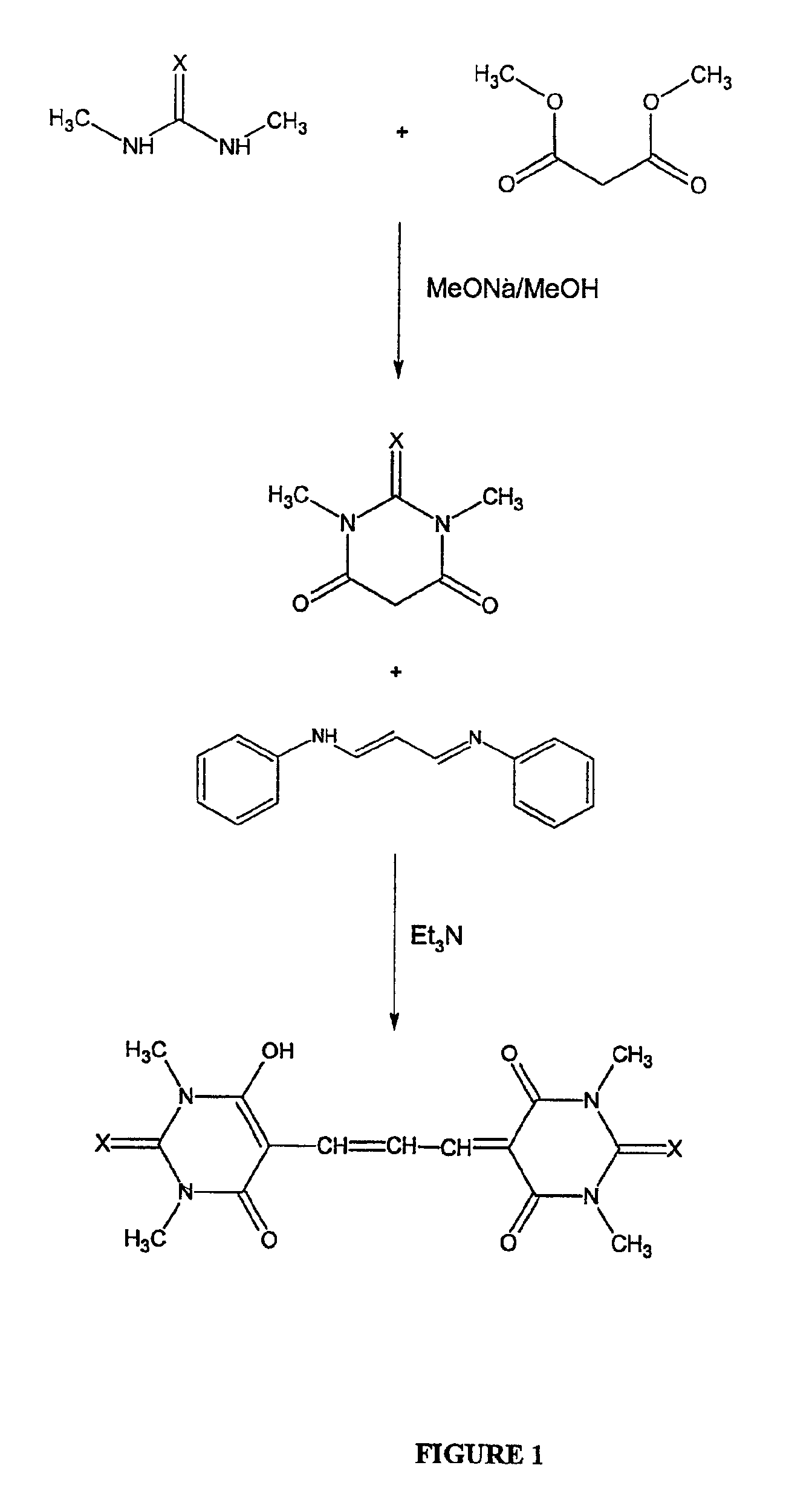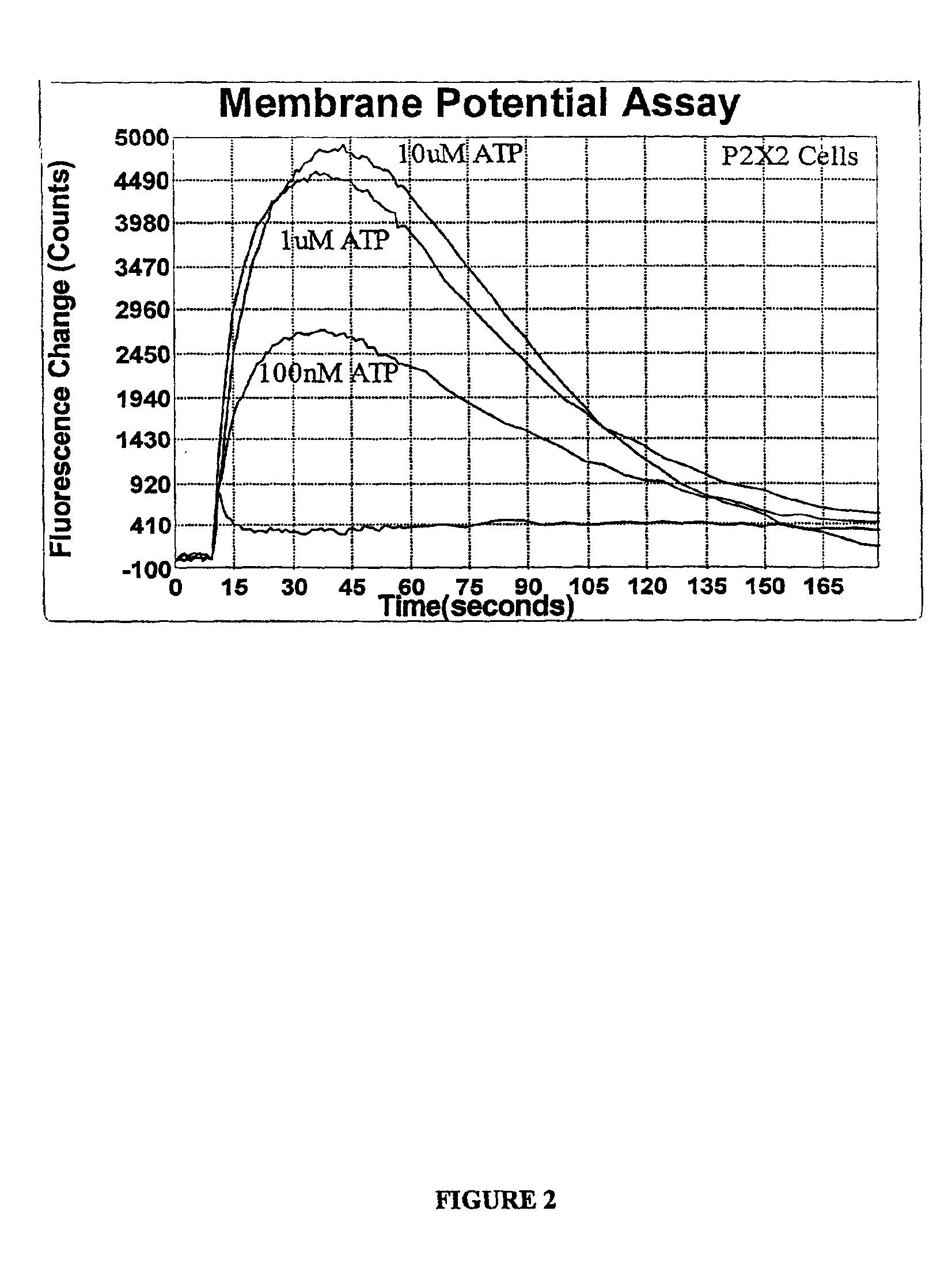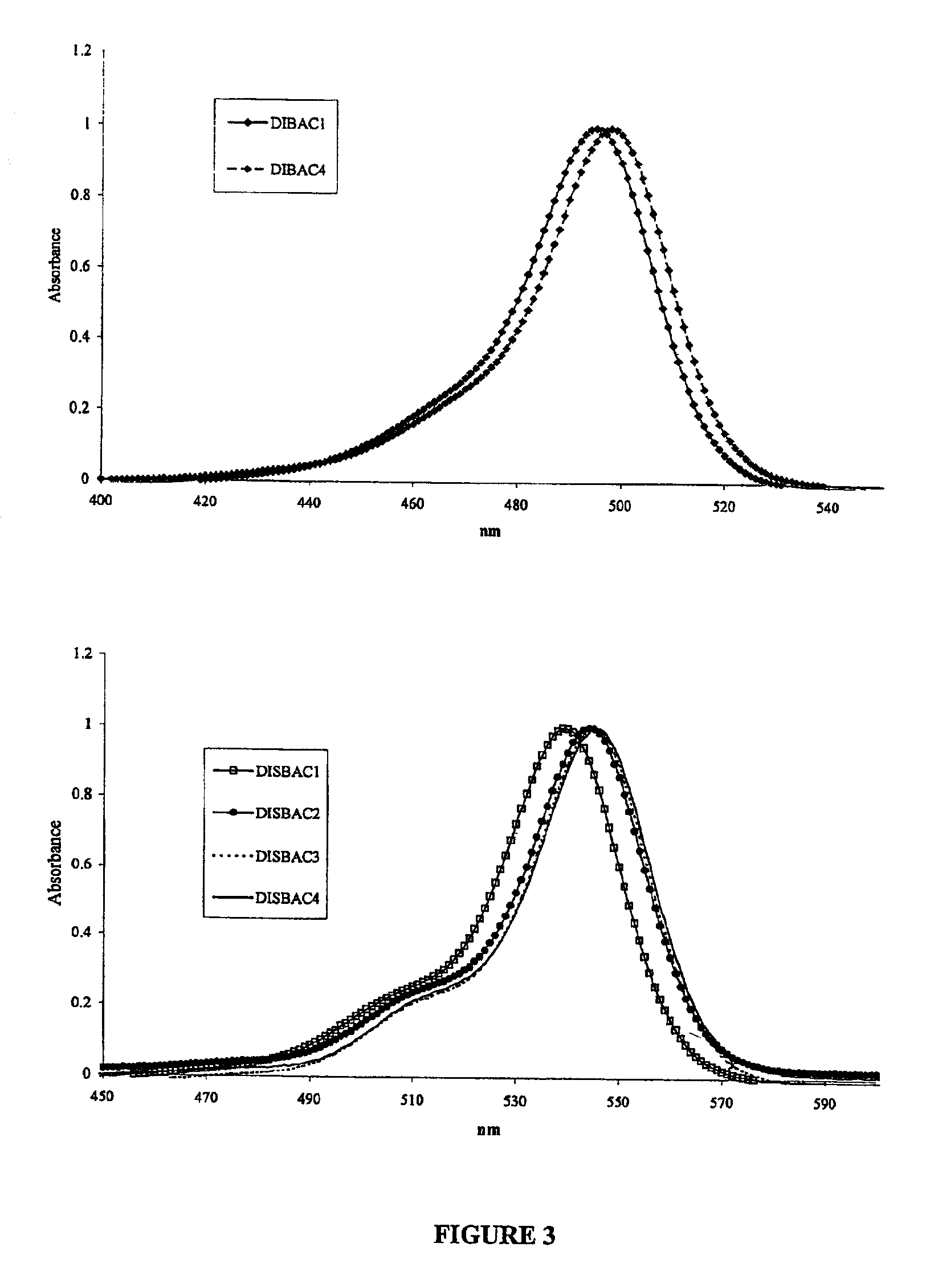Method for measuring cellular transmembrane potential changes
- Summary
- Abstract
- Description
- Claims
- Application Information
AI Technical Summary
Benefits of technology
Problems solved by technology
Method used
Image
Examples
example 1
Preparation of DiSBAC1(3)
[0021]
[0022]DiBAC and DiSBAC dyes are prepared based on the procedure for ethyl and butyl derivatives (H. Bartech and G. Haubold, Arch. Pharm. 1982, 315, 761-766). Specifically, malonaldehyde bis(phenylimine)monohydrochloride (2.6 g, 10 mmol) and 1,3-dimethyl-2-thiobarbituric acid (3.5 g, 20 mmol) are dissolved in acetonitrile (40 mL). To the solution is added triethylamine (2 g, 20 mmol). The reaction mixture is refluxed until the starting materials are completely consumed as indicated by TLC. The mixture is cooled to room temperature, and poured into acidic water (pH 2-3, 350 mL). The resulting suspension is filtered to collect the solid that is washed with cold water and air-dried. The crude product is further purified on a silica gel column using a gradient of dichioromethanol / methanol to give the desired product.
example 2
Measuring Membrane Potentials using DiSBAC1(3) in Combination with the Fluorescence Imaging Plate Reader (FLIPR™)
[0023]This specific example illustrates how to use DiSBAC1(3) in P2X2 cells in combination with FLIPR™, fluorescent imaging plate reader sold by Molecular Devices Corp. of Sunnyvale, Calif. P2X2 cells are 1321 N1 astrocytoma cells transfected to overexpress the purinergic P2X2 ligand-gated ion channel. P2X2 belongs to a class of purinergic ion channels that pass calcium and sodium in response to purine, including adenosine 5′-triphosphate (ATP). P2X2 cells are propagated and maintained in DME (high glucose), 10% FCS, 1× Pen / Strep and 2 mM L-glutamine. Doubling time is approximately 36 hours. P2X2 cells should be split at a 1 to 2 ratio upon confluence. The cells should be carried for no more than 20 passages. When approaching this limit, a new frozen vial of cells should be resurrected. Following is a typical kit procedure:[0024]1. Plate 40,000 P2X2 cells in 100 μL per we...
example 3
Measuring Membrane Potentials using DiBAC1(3) in Combination with a Microscope
[0040]DiBAC1(3) is used to measure membrane potential change with a microscope as described by L. M. Loew (Methods in Cell Biology, vol. 38, pp195-209).
PUM
 Login to View More
Login to View More Abstract
Description
Claims
Application Information
 Login to View More
Login to View More - R&D
- Intellectual Property
- Life Sciences
- Materials
- Tech Scout
- Unparalleled Data Quality
- Higher Quality Content
- 60% Fewer Hallucinations
Browse by: Latest US Patents, China's latest patents, Technical Efficacy Thesaurus, Application Domain, Technology Topic, Popular Technical Reports.
© 2025 PatSnap. All rights reserved.Legal|Privacy policy|Modern Slavery Act Transparency Statement|Sitemap|About US| Contact US: help@patsnap.com



